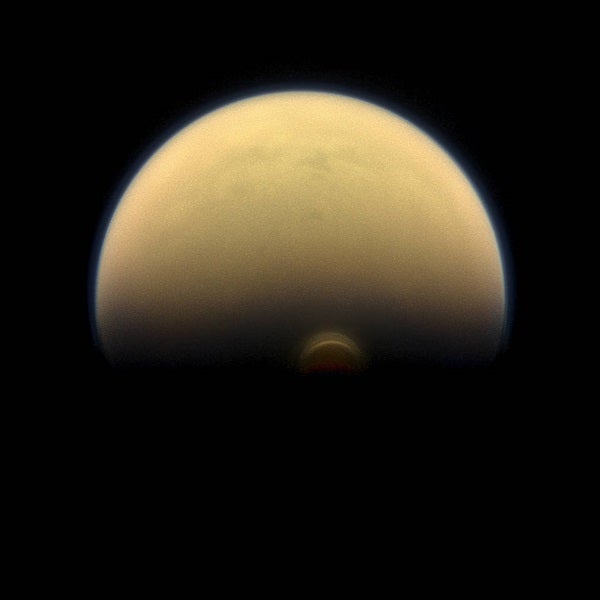Using Cassini’s Composite Infrared Spectrometer, she found a much larger system some 95 to 125 miles (150 to 200 km) above the south pole. The discovery is significant because this is the first time since Cassini arrived at Saturn in 2004 that the probe has been able to observe winter’s onset. (Saturn takes 29.5 years to orbit the Sun, so winter in the northern hemisphere was wrapping up in 2004.) The clouds Anderson sees now are higher and more extensive than those from 2004, leading her to say that winter on Titan “comes in like a lion and goes out like a lamb.”
Titan has the thickest haze of any object in the solar system — at least today. But in Earth’s distant past, haze blanketed our planet. Giada Arney of the University of Washington laid out the case for a hazy Earth during the Archean Era, which lasted from about 4 to 2.5 billion years ago, driven by large quantities of methane and a lack of molecular oxygen. The methane arose from both geologic processes and methane-producing bacteria. As astronomers hunt for Earth-like exoplanets, Arney says it’s worth considering what era on Earth should we be talking about.
A haze-shrouded world rich in methane could be as full of life as one with a clear oxygen-rich atmosphere — and the hazy one would be easier to discern from light-years away. But how could we tell an exo-Earth from an exo-Titan? Arney says the ratio of methane to carbon dioxide would settle the question, with Earth-like worlds showing a smaller ratio. So perhaps as we scour the cosmos for extraterrestrial life, we should be looking for a pale-orange dot, not a pale blue dot.










